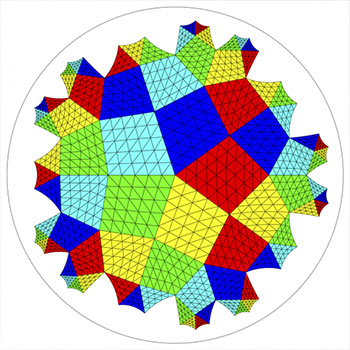Using the definition of #K_p# we can set up an initial, change, equilibrium box (or ICE box). The important bits in the question are the fact that the tube is sealed and that it's under atmospheric conditions. The sealed tube indicates that the total moles of gas will not change and the pressure will stay constant since the temperature, volume, and total quantity of gas (moles) is kept constant. The atmospheric conditions is another way of saying the pressure in the tube is 1 atm or 760 mmHg and so on. For the sake of simplicity, I'll be using atm.
The set up for your ICE box will start with #N_2O_4# having one atm of pressure and #NO_2# having no pressure since none is present. The change will be -x for #N_2O_4# and +2x for #NO_2# since for every mole of #N_2O_4# decomposed, two moles of #NO_2# are produced so the will contribute to the partial pressure twice as much. The equilibrium partial pressures will be 1-x and 2x for #N_2O_4# and #NO_2# respectively. (The commas in the box is for spacing only)
,,,,,,,,,,,,,,,,,,,,,,#P_(N_2O_4)#,,,,,,,,, #P_(NO_2)#
Initial ,,,,,,,,,,1 atm,,,,,,,,,,,,,,,0
Change,,,,,,,,,,-x,,,,,,,,,,,,,,,+2x
Equil.,,,,,,,,,,,,1-x,,,,,,,,,,,,,,,,,2x
#K_p# is similar to #K_c# in the aspect of setting up the rate quotient, use the chemical formula with partial pressures of products (each raised to the power of their own coefficient) over reactants (also raised to their powers) using the equilibrium partial pressures. Then solve for x.
#K_p=((P_(NO_2))^2)/(P_(N_2O_4))#
#0.14=(2x)^2/(1-x)#
#4x^2+0.14x-0.14=0#
#x~~0.170#
From here, you can get the partial pressures of the gasses and use them to run a couple idea gas law equations
#PV=nRT#
(T is in kelvins not Celsius. Kelvins=273.15+celcsius)
Before you calculate for moles at equilibrium, you need to calculate the volume which can be done by using the initial gas, #N_2o_4#. (I'm still using atmospheres)
#(1 )*V=(.1 )(O.0821)((273.15+25) #
#V~~2.45 L#
Now with the calculated volume, you can use the partial pressures from equilibrium and run the ideal gas law, solving for #n#
#n=(PV)/(RT)#
#n=(P_(N_2O_4)V)/(RT)#
#n=(P_(NO_2)V)/(RT)#

